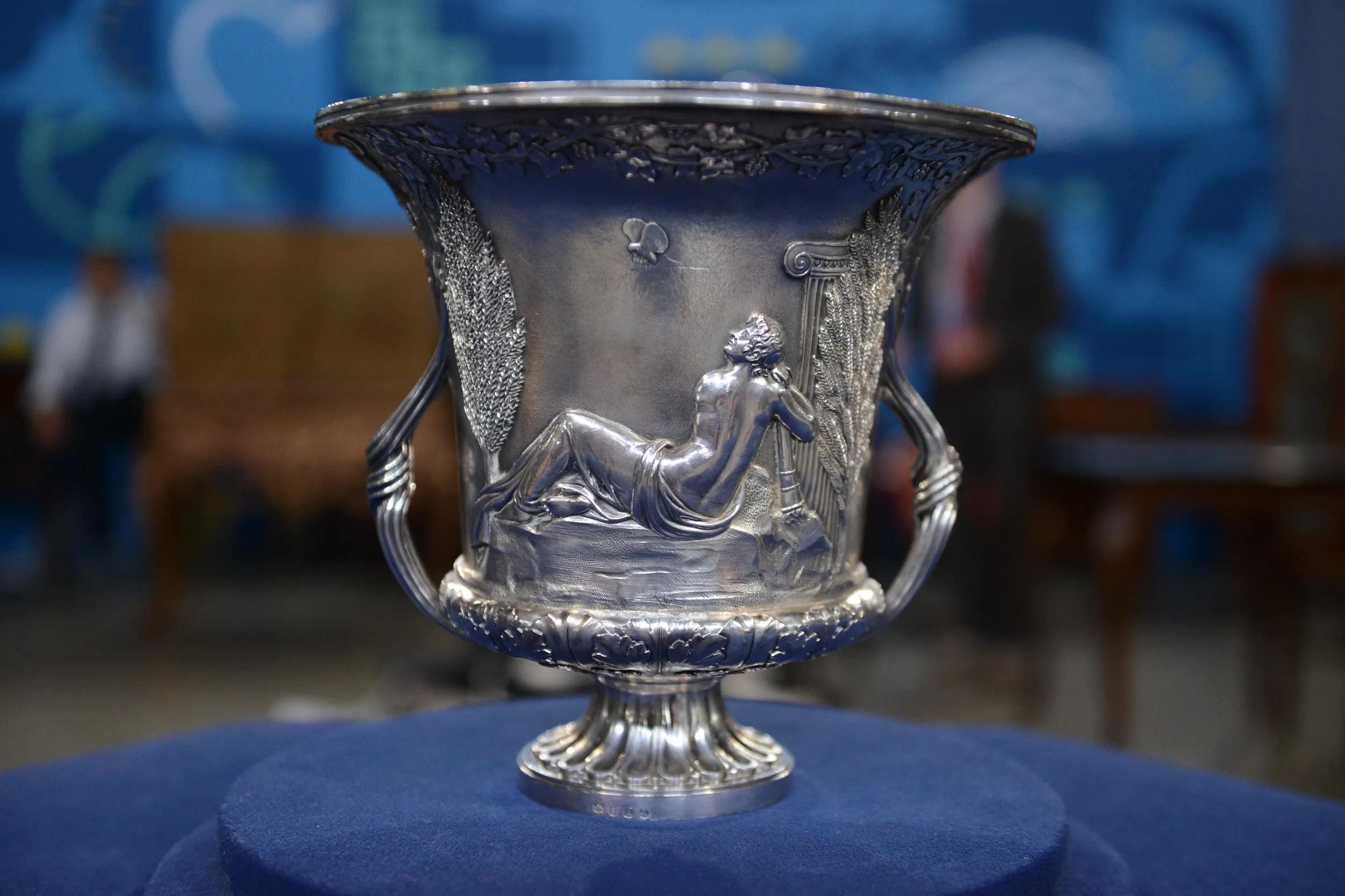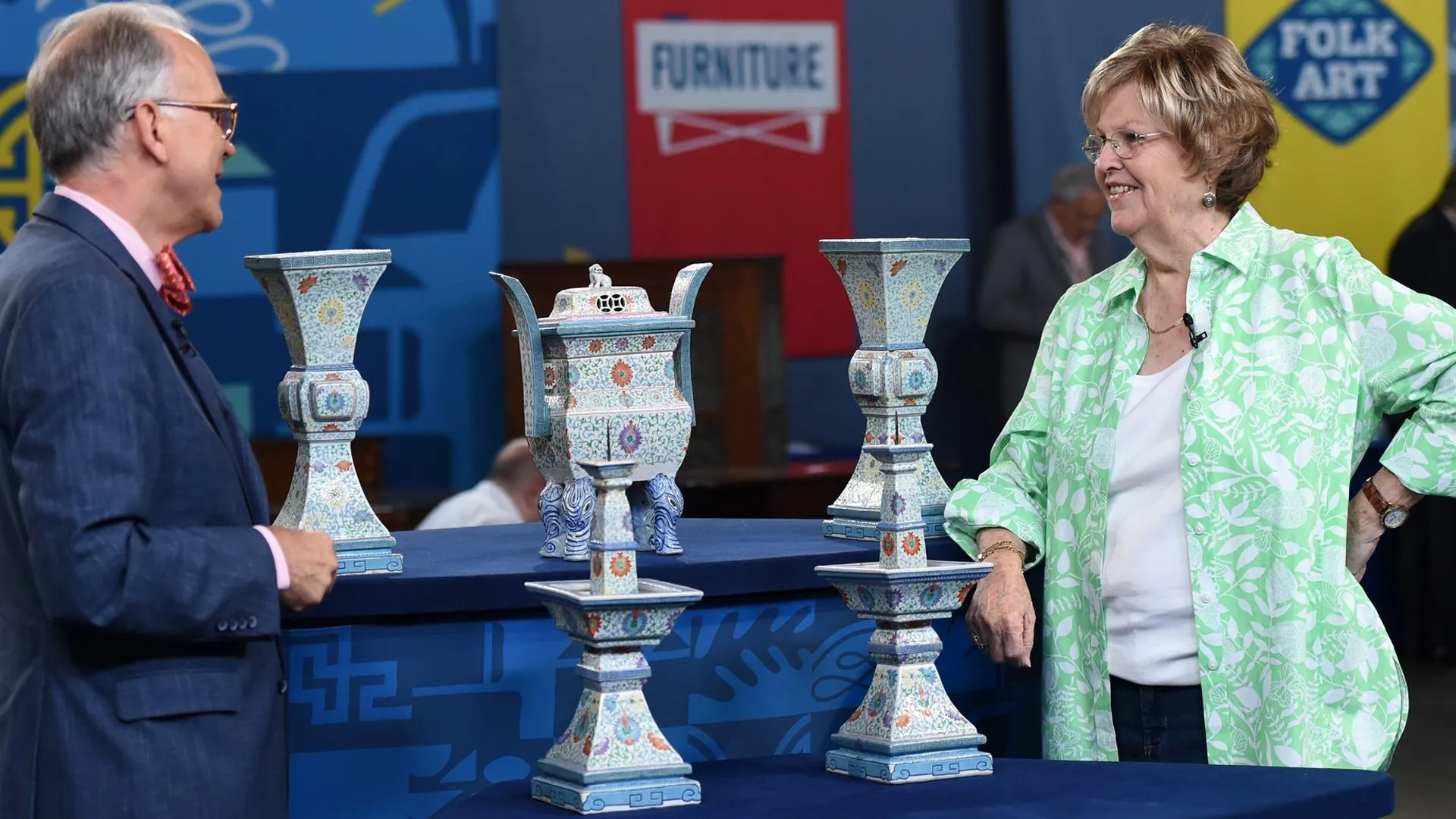GUEST: A man brought it in one day, and my receptionist said, "Well, she's not here, but she'll look at it when she comes in." So we put it in the vault. And I went in there and got it sometime later, because a man came in wanting a wine cooler. And she said, "Oh, there's one in the safe." So I went in and got it, and offered to sell it to him, and he passed it. So I had it out on the counter, and my husband came through and he said, "Oh, that's pretty." I said, "Yes, maybe I'm going to get something nice like this for my anniversary and birthday." And he said, "Oh, oh, you are. I'm going to buy this." Well, he did it to cover up that he'd forgotten about it. So he said, "I'll buy this." But it was really black. It was, you know, not cleaned at all, and you couldn't really tell what it was. So we took it out to the river that weekend, and I started cleaning on it, and I realized it had some pretty figures on it. He paid the man the consignment price, which was $1,000.
APPRAISER: $1,000, okay. And when was this?
GUEST: About 1990.
APPRAISER: Okay. It came into your store... you are in the jewelry business, I believe.
GUEST: That's right. That's right, I'm a jeweler.
APPRAISER: It's a wine cooler, as you mentioned. It's made by the master silversmith Paul Storr, whose name, as you may know, is synonymous with some of the greatest work that's ever been produced in England ever. He worked in partnership with several other people during what many people consider to be the highest point of English silver production, that is the Regency period, which runs from 1811 to 1820. It's a time when George IV was really trying to emulate the great kings of antiquity,
GUEST: Right, right.
APPRAISER: ..and he was trying to acquire things that were so showy and lustrous, in some way to compete with Napoleon in France. This particular wine cooler would have been one of a pair. It is designed by John Flaxman. Now, John Flaxman is a very famous English sculptor. He is very well known for his work that he did with Storr. He's also very well known for the work that he did for Wedgwood. Now, Flaxman drew a copy of a Greek vase. Theocritus vase is what it's known as. He read the poem by Theocritus, who's an ancient Greek poet.
GUEST: Yes.
APPRAISER: And based upon what he read, he drew his interpretation, and it's perfectly encapsulated in the urn that we have here. We have this reclining sort of partially nude figure at the front here, that beautiful textured background, beautifully executed tree, the column there, which is a great symbol of antiquity. And you've got the sort of vestals on this side, keeping the fire burning. This is an anthemion, and it's sort of an eternal flame. You've got these beautiful intertwined, sinuous handles that come up here and then form these floral branches. The vase shape itself is a campana form, that is, a bell shape, very classic, and known in antiquity. Got a series of hallmarks on the foot which confirm what we think here. And the date letter in particular here, the T, that is for 1814. So you're smack in the middle of the Regency period. This is, I think, really one of the great expressions of design, silver design, of that period. As English silver goes, of this period, this doesn't really get that much better. At auction, I would imagine this piece to sell today for between $40,000 and $60,000.
GUEST: $40,000 to $60,000? Well, that wasn't a bad investment, was it?
APPRAISER: Not at all. If you had a pair of these, it would sell for between $100,000 and $150,000. I mean, they… this is a knockout piece of English silver. It's one of the best pieces of silver I've ever seen on Antiques Roadshow,
GUEST: That’s wonderful.
APPRAISER: so thank you so much for bringing it in.












